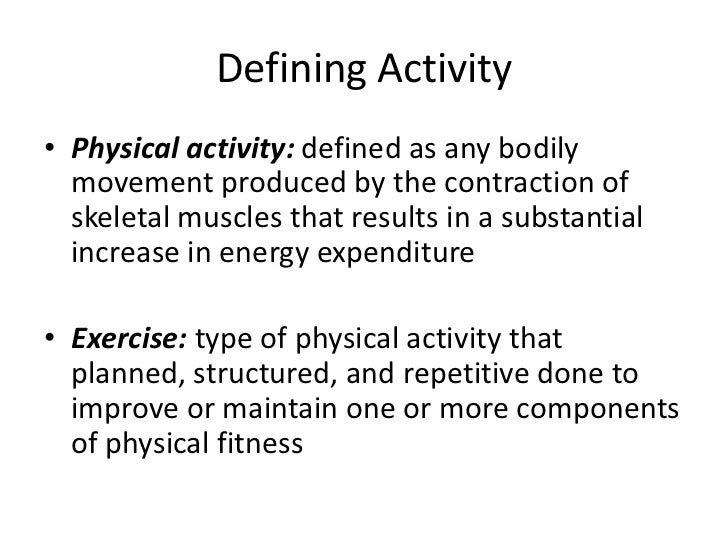

It might also be characterized as behaviour of complex assessment, considering its diversity regarding different body movements and dimensions such as frequency, intensity and duration.

Physical activity is defined as any body movement resulting in energy expenditure higher than resting. Moreover, these parameters presented relatively high accuracy, even when applied to specific groups such as sex, age, nutritional status and physical fitness. In conclusion, the physical activity thresholds, generated according to the entire sample, were higher and presented improved specificity when compared to thresholds currently recommended. The intensity thresholds identified were 4.9 METs for moderate and 6.8 METs for vigorous physical activity. Among 54 men and 49 women, the mean (± SD) ages were 36.1 (± 11.1) and 33.9 (± 10.6) years, respectively. A total of 103 participants attended the two visits. The intensity thresholds were identified using Receiver Operator Characteristic (ROC) curve analysis, having relative intensity categories as criterion measure.

The oxygen uptake was measured by a VO2000 ® gas analyser throughout the tests. The participants carried out an incremental maximal cycle ergometer test and asked to perform nine free-living activities. Convenience sampling was used to recruit total of 112 adults. The purpose of the study was to identify and compare validity parameters of different absolute intensity thresholds in METs, using relative intensity classification as criterion measure.


 0 kommentar(er)
0 kommentar(er)
